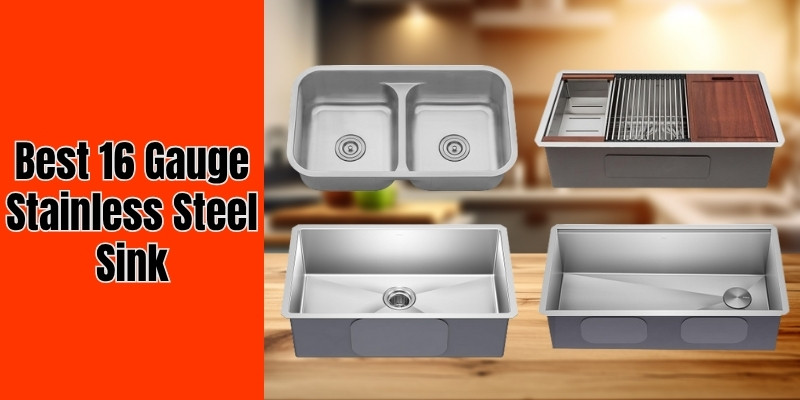Disclosure: This post contains affiliate links and I will be compensated if you make a purchase after clicking through my links. Learn More
When it comes to plumbing, choosing the right material is crucial for ensuring a reliable, efficient, and long-lasting system. Two of the most popular options in the market today are PEX and copper pipes. Each material has its own unique characteristics, benefits, and drawbacks, making it essential for homeowners and professionals to understand their differences before making a decision.
In this article, we will delve into the world of PEX and copper pipes, comparing their costs, durability, installation processes, and ideal use cases to help you determine which option is best suited for your specific plumbing needs.

What is PEX? Understanding PEX
PEX, or cross-linked polyethylene, is a relatively new player in the plumbing industry. This flexible plastic tubing has gained popularity due to its ease of installation and resistance to various environmental factors.
PEX is created by exposing polyethylene to high heat and pressure, resulting in a material that is durable, flexible, and resistant to scale buildup and chlorine. Its flexibility allows for easier navigation through tight spaces and around obstacles, making it an ideal choice for complex plumbing systems.
What is Copper? Understanding Copper Pipes
Copper has been a staple in the plumbing world for decades, thanks to its durability, natural resistance to bacteria, and proven track record. Copper pipes are made from pure copper and are available in various diameters and thicknesses to accommodate different plumbing needs.
They are known for their ability to withstand high temperatures and pressure, making them suitable for both hot and cold water applications. Additionally, copper’s natural properties prevent the growth of bacteria, ensuring clean and safe drinking water.
Cost Comparison: PEX vs Copper
Cost Analysis
When it comes to the initial cost of materials, PEX has a clear advantage over copper. PEX tubing is generally less expensive than copper pipes, with prices varying depending on the diameter and brand. However, the cost difference becomes more significant when considering the installation costs. Installing PEX is a relatively simple process that requires fewer fittings and can be completed more quickly, resulting in lower labor costs.
In contrast, installing copper pipes is more time-consuming and requires specialized skills, such as soldering, which can drive up labor costs. Long-term maintenance costs should also be considered, as copper pipes may be more prone to corrosion in certain water conditions, potentially leading to leaks and the need for repairs or replacement.
Durability and Lifespan: Which is More Durable?
Both PEX and copper pipes are known for their durability, but they have different strengths and weaknesses. PEX is highly resistant to freezing and bursting, making it an excellent choice for regions with cold climates. It is also resistant to corrosion, which can extend its lifespan and reduce the need for maintenance.
However, PEX can be vulnerable to damage from UV light exposure, so it should be protected from direct sunlight. Copper, on the other hand, is naturally resistant to corrosion and has a proven track record of lasting for decades in various plumbing applications.
In certain water conditions, such as those with high acidity or high mineral content, copper can be prone to corrosion, leading to pinhole leaks and the need for replacement.
Installation Process: Installing PEX and Copper Pipes

The installation process for PEX and copper pipes differs significantly. PEX installation is relatively simple and can often be completed by a skilled DIYer. The flexible tubing can be easily cut to size and connected using crimp rings or push-fit fittings, eliminating the need for soldering.
Read More: Can You Use Pex-B Fittings on Pex-A
This allows for faster installation and reduces the risk of leaks due to poor soldering connections. In contrast, installing copper pipes requires more specialized skills and tools. The pipes need to be cut to size, and the ends must be cleaned and prepped for soldering.
The soldering process involves using a torch to heat the copper and apply solder to create a watertight seal. This process is more time-consuming and requires a higher level of expertise to ensure proper installation.
Advantages and Disadvantages
Pros and Cons of PEX

PEX offers several advantages, including its flexibility, which allows for easier installation in tight spaces and around obstacles. It is also resistant to scale buildup and chlorine, which can extend its lifespan and maintain water quality. However, PEX does have some disadvantages.
It can be vulnerable to damage from UV light exposure, so it must be protected from direct sunlight. Additionally, some PEX materials may not be compatible with certain types of water heaters, so it is essential to check compatibility before installation.
Pros and Cons of Copper

Copper pipes have several advantages, including their natural resistance to bacteria, which helps maintain clean and safe drinking water. They are also highly durable and have a proven track record of lasting for decades in various plumbing applications. However, copper pipes do have some disadvantages. They are more expensive than PEX, both in terms of material and installation costs.
Additionally, copper can be susceptible to corrosion in certain water conditions, such as those with high acidity or high mineral content, which can lead to pinhole leaks and the need for replacement.
Environmental Impact: Environmental Considerations
When considering the environmental impact of PEX and copper pipes, it is essential to look at both the manufacturing and disposal processes. The production of PEX requires the use of petroleum-based materials, which can have a negative impact on the environment. However, PEX is recyclable, and many manufacturers have implemented recycling programs to reduce waste.
Copper, on the other hand, is a natural resource that is mined from the earth. The mining process can have environmental consequences, but copper is 100% recyclable and can be reused indefinitely without losing its quality. In terms of disposal, both PEX and copper can be recycled, but copper has a higher recycling rate due to its inherent value.
Best Use Cases
Ideal Applications for PEX
PEX is an excellent choice for several plumbing applications, particularly in situations where flexibility and ease of installation are important. It is commonly used in residential plumbing for water supply lines, radiant floor heating systems, and in retrofit projects where accessing existing pipes may be difficult.
PEX’s resistance to freezing and bursting also makes it a good choice for outdoor applications, such as irrigation systems or outdoor showers, as long as it is protected from direct sunlight.
Ideal Applications for Copper
Copper pipes are often preferred in situations where durability and longevity are the top priorities. They are commonly used in commercial plumbing applications, such as hospitals, schools, and office buildings, where the plumbing system is expected to last for decades.
Copper is also a good choice for high-temperature applications, such as water heaters and boilers, due to its ability to withstand high heat. In residential settings, copper is often used for exposed plumbing, such as in vintage or historical homes, where the aesthetic appeal of copper pipes is desired.
Expert Opinions: Insights from Plumbing Experts
To gain a better understanding of the preferences and experiences of plumbing professionals, we reached out to several experts in the field.
“PEX has revolutionized the plumbing industry,” says John Smith, a master plumber with over 20 years of experience.
“Its flexibility and ease of installation have made it a go-to choice for many residential projects.”
However, he also notes that copper remains the standard for commercial applications and high-temperature settings.
Another expert, Lisa Johnson, a plumbing instructor at a local trade school, emphasizes the importance of proper installation techniques for both PEX and copper.
“Regardless of the material you choose, the key to a successful plumbing system is proper installation. With PEX, it’s crucial to use the correct fittings and crimp tools, while with copper, proper soldering technique is essential to prevent leaks.”
Frequently Asked Questions
Can PEX be used outdoors?
Yes, PEX can be used outdoors, but it must be protected from direct sunlight to prevent damage from UV light exposure. This can be achieved by using UV-resistant PEX or by installing the tubing in a conduit or sleeve.
Is copper piping better for drinking water?
Both PEX and copper pipes are considered safe for drinking water when installed properly. However, copper’s natural resistance to bacteria growth may provide an additional level of protection against contamination.
Read Also: Is Teflon Tape Safe for Drinking Water?
How do PEX and copper pipes handle extreme temperatures?
PEX is highly resistant to freezing and bursting, making it a good choice for cold climates. It can also withstand high temperatures up to 200°F (93°C). Copper pipes are suitable for both hot and cold water applications and can withstand even higher temperatures, making them ideal for use with water heaters and boilers.
Final Thoughts
In the battle of PEX vs copper, there is no one-size-fits-all answer. The choice between these two plumbing materials depends on a variety of factors, including cost, durability, ease of installation, and specific plumbing needs. PEX offers flexibility, affordability, and resistance to freezing and corrosion, making it an attractive option for many residential applications. On the other hand, copper’s time-tested durability, natural resistance to bacteria, and ability to withstand high temperatures make it a preferred choice for commercial settings and high-temperature applications.
Ultimately, the decision between PEX and copper should be based on a careful consideration of your specific plumbing requirements, budget, and the expertise of your plumbing professional. By weighing the pros and cons of each material and understanding their ideal use cases, you can make an informed decision that will result in a reliable, efficient, and long-lasting plumbing system for your home or business.
We hope this comprehensive comparison of PEX and copper pipes has provided you with valuable insights to help guide your plumbing material decision. If you have any personal experiences or questions about using PEX or copper pipes, we encourage you to share them in the plumbing forum. Your input may help other readers who are facing similar plumbing decisions.


